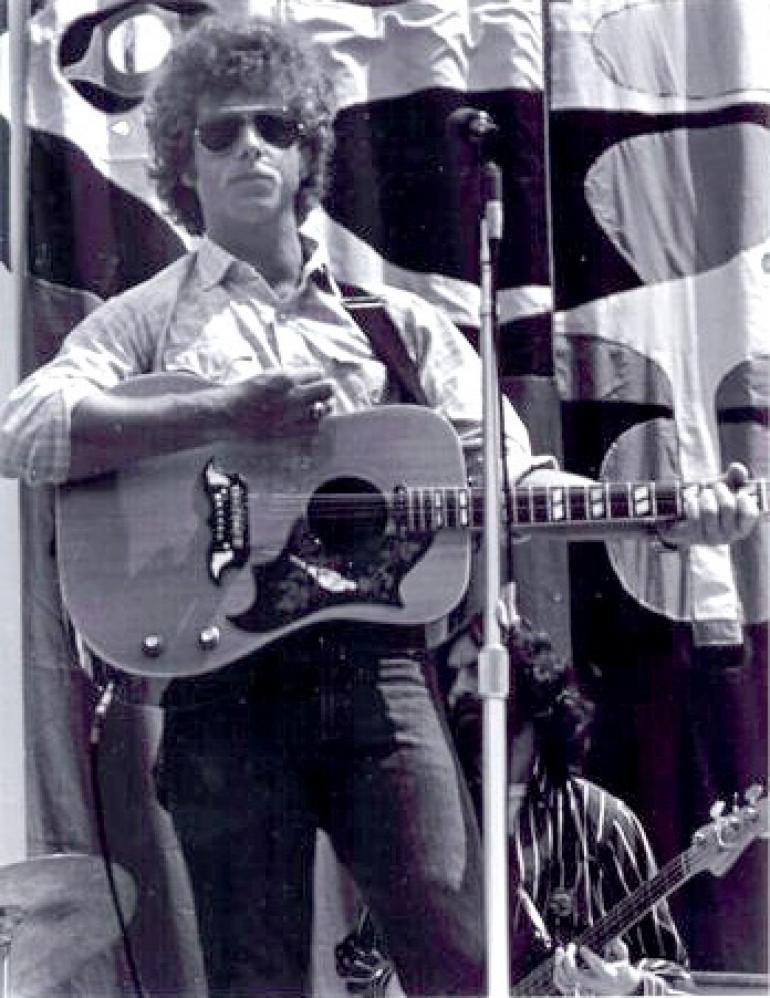Chris Hillman Will Never Forget Seeing Pete Seeger, The Beatles, and the Boss

Though many music fans still do not recognize his name, Chris Hillman has had a monumental impact on American music and may have one of the most impressive resumes of any contemporary musician. He’s probably most famous for being a founder of the legendary Byrds in 1964, with Roger McGuinn, Gene Clark, David Crosby, and Michael Clarke. They recorded an electric version of Bob Dylan’s “Mr. Tambourine Man” that hit the top of the American and European charts and went on to be recognized among the founders of folk rock, psychedelic rock, and country rock.
But, before that, Hillman was a California guy who grew up atop a surfboard. At age 17, he played mandolin for a San Diego-based bluegrass band called the Scottsville Squirrel Barkers, who included Bernie Leadon – a future founder of The Eagles. Hillman next joined another bluegrass band called The Golden State Boys (later The Hillmen).
In 1968, Hillman left the Byrds to create The Flying Burrito Brothers with ex-Byrd Gram Parsons. Hillman says the Burritos “created an environment” for outlaw country music. While the Byrds put more rock into their country-rock, the Burritos often put in more country.
After the Burritos, Hillman’s next venture was with Stephen Stills in the short-lived but innovative band Manassas. The group’s self-titled debut album is one of pop music’s most brilliant works – a masterpiece that melded rock, bluegrass, salsa, blues, and country music.
Other of his pursuits include The Souther-Hillman-Furay Band with Poco’s Richie Furay and John David Souther. In the 1980s, he joined forced with Herb Pedersen and others to form the Desert Rose Band. But, Hillman and Pedersen eventually headed back to bluegrass, joining Tony and Larry Rice in Rice, Rice, Hillman and Pedersen.
Hillman may not get the acclaim enjoyed by a virtuoso mandolinist like David Grisman, but his touch on the mandolin – particularly during his blazing acoustic versions of the Byrds’ classic “Eight Miles High” – can often go beyond sublime. And when he and Pedersen trade mandolin and guitar licks on “The Bells of Rhymney” – a song first recorded by Pete Seeger and popularized by the Byrds – he can paint a landscape as beautiful as one done by Van Gogh.
With such a resume in mind, listen carefully to Hillman’s choices of the best and most influential concerts he has seen:
“I saw Pete Seeger in a small theater in San Diego when I was only 15, and I walked backstage,” Hillman recalls. “He was so kind to me. He told me to keep practicing and to ‘sing out like you mean it.’ ”
Another show a year later also made a lasting impression.
“I was a 16-year-old kid five feet away from the Stanley Brothers in an L.A. club,” he recalls. “I was watching them play and wanting to play bluegrass.” The Stanley Brothers, one of the most influential bands in bluegrass history, were also known for brilliant harmonies.
His favorite concert memories aren’t all folk and bluegrass, though. Hillman also was one of the fortunate people to see a legendary August 1965 concert by four pretty well-known Liverpool rock and rollers. “I saw The Beatles at the Hollywood Bowl,” he says, noting that it was during the Revolver period. “They came out on stage wearing Nehru-collar, military-style matching suits. They were fantastic.”
The Beatles that night played a 12-song set: “Twist and Shout,” “She’s a Woman,” “I Feel Fine,” “Dizzy Miss Lizzy,” “Ticket to Ride,” “Everybody’s Tryin’ to Be My Baby,” “Can’t Buy Me Love,” “Baby’s in Black,” “I Wanna Be Your Man,” “A Hard Day’s Night,” “Help!” and “I’m Down.”
Two decades later, Hillman caught The Boss in Los Angeles: “I was not a fan of Bruce Springsteen’s records,” he admits. “But I was sitting in the bleachers at the L.A. Coliseum and saw him with Nils Lofgren. He was incredible. He gave off a feeling of ‘there’s no other place I would rather be.’ He was so committed to the moment.”
That show was a part of a four-night stand by Springsteen in September 1985. About 85,000 fans filled the ancient Los Angeles stadium each night during that run to witness the Boss’s wildly successful Born in the USA tour.
Hillman says he “was taken” by a Brad Paisley show about three years ago, but he doesn’t go to concerts anymore. “Because of the crowds and chaos,” he explains. Crowds and chaos were part of his heyday in the ’60s. He flatly says those days were a major highlight of his career, and “The Bells of Rhymney” was the song that “defined” the group.
“We were guys with no rock chops who all came out of folk music,” he says. “We were five of the most diverse, weird people getting together, and we created a sound.”




